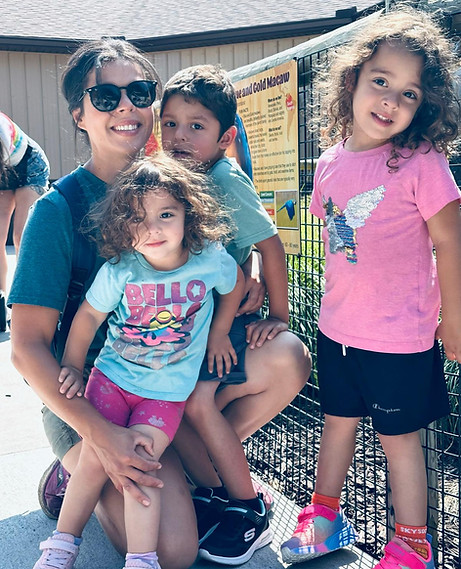
My name is Myriam Wilkes. I'm the mother of an autistic son, a former NICU baby, and two daughters, one of whom is also on the autism spectrum. Diagnosing my daughter has been particularly challenging due to the fact that girls are often not assessed as diligently as boys. Currently, I'm pursuing a Master of Science in Education with a focus on special education and autism spectrum disorder at the University of Kansas (Rock Chalk, Jayhawk!). My academic journey began with an undergraduate degree in Business Administration and a graduate degree in Government from Pennsylvania State University (WE ARE!).
When my son was diagnosed with autism at 21 months old, my life took a new direction as I dedicated myself to learning everything I could about autism. While I was impressed by the wealth of information available, I was disheartened by the lack of clear guidance for parents of newly diagnosed children. Receiving an autism diagnosis can feel overwhelming, as if the world is crumbling beneath you. The journey ahead may be lonely and challenging, but it is not without hope. My perspective shifted dramatically when I realized that my son's diagnosis was not about me, but about him. This change in mindset transformed my approach, leading me to explore early intervention and the best services for his needs. I understood that, despite the challenges I would face in navigating this unfamiliar territory, it would be even more difficult for him without the right support.
Following his diagnosis, we began Speech Language Pathology, Occupational Therapy with a focus on Sensory Integration, Early Intervention, and Play-Based Therapy. I also learned how to engage with him through an eight-week course on The Early Start Denver Model and by incorporating Greenspan Floor-time Therapy, which, while not an Evidence-Based Practice (EBP), seemed to benefit him. Although we did not use Applied Behavior Analysis (ABA), an EBP, I unknowingly implemented Pivotal Response Treatment (PRT), a well-studied and naturalistic form of ABA, which has become one of my preferred EBPs for autism.
Over the past four years, my son has made consistent progress through these various interventions. He is now speaking, playing with his sisters and peers, excelling academically, and gaining independence. Most importantly, he is developing alongside his typical peers. While he remains autistic, he is learning to navigate a world designed by and for neurotypical individuals—a world that often overlooks those who are different, and autism is fundamentally about being different.
In addition to my work as a mother and student, I am also the founder of Squish4Joy, where I focus on training parents to utilize evidence-based practices to tailor interventions based on each child's unique needs and deficits. Squish4Joy also offers handmade, gluten-free sensory play dough designed to stimulate and support sensory development for individuals on the autism spectrum. Inspired by my experiences with my children, Squish4Joy aims to empower families with tools and knowledge that promote sensory integration and skill acquisition. My mission is to help families navigate their autism journey with hope and effective, research-backed strategies that make a meaningful difference.